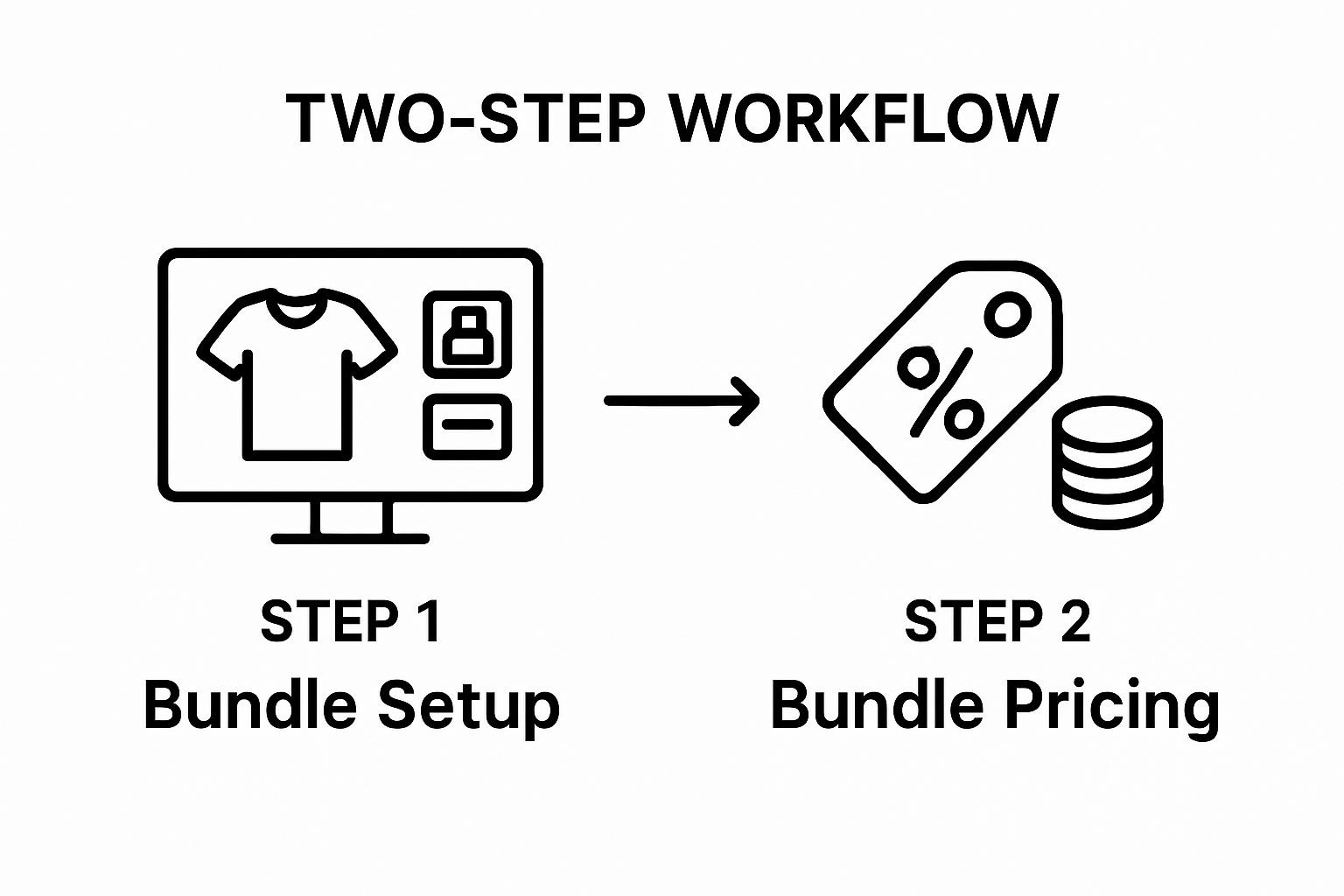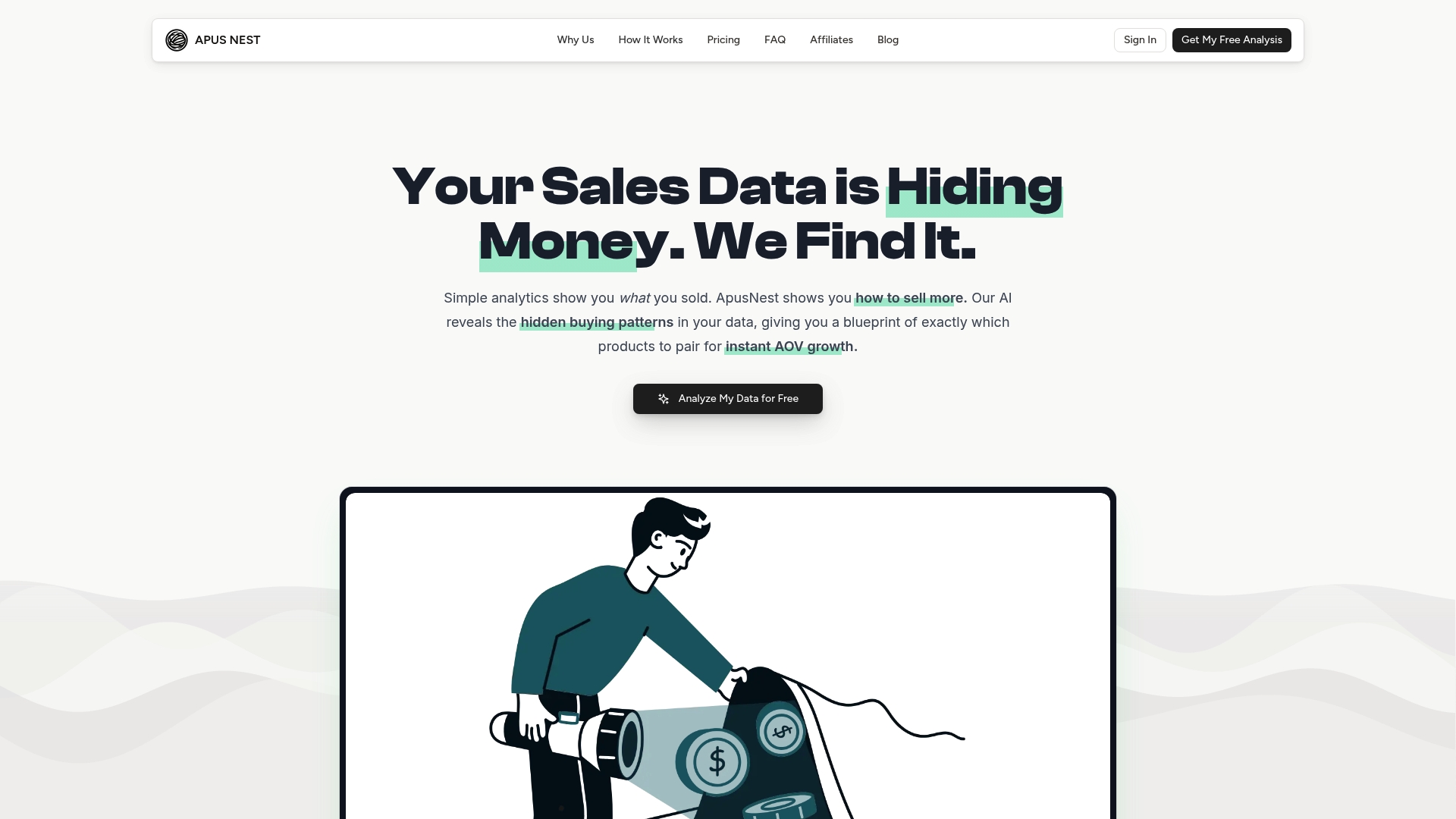
Product bundling is one of the smartest ways online stores raise profits and boost customer loyalty. Some e-commerce brands see as much as a 30 percent increase in average order value after introducing bundles. But most businesses simply group together random items and hope for results. The real breakthroughs happen when you dig into buying patterns, tap into hidden customer needs, and assemble bundles that people cannot resist.
Table of Contents
- Step 1: Analyze Your Product Offerings
- Step 2: Identify Target Customer Segments
- Step 3: Design Attractive Bundles
- Step 4: Implement Bundling On Your E-Commerce Platform
- Step 5: Promote Bundles To Drive Traffic
- Step 6: Evaluate Sales Performance And Adjust
Quick Summary
| Key Point | Explanation |
|---|---|
| 1. Analyze product inventory thoroughly | Conduct a detailed analysis of sales data to uncover purchasing patterns and synergies among products. |
| 2. Create detailed customer segments | Develop customer personas based on demographics and purchasing behavior to identify target audiences for bundles. |
| 3. Design bundles with clear value | Curate product combinations that genuinely address customer needs while also ensuring profitability. |
| 4. Implement bundles effectively on platforms | Configure your e-commerce platform to support bundles, ensuring clear pricing and visibility. |
| 5. Continuously evaluate and refine bundles | Regularly analyze performance metrics and customer feedback to improve bundle configurations and strategies. |
Step 1: Analyze Your Product Offerings
Before diving into product bundling strategies, you must first conduct a thorough analysis of your current product inventory. This foundational step allows you to uncover hidden connections and potential opportunities that can significantly boost your e-commerce revenue. Learn more about strategic product analysis to maximize your bundling potential.
Start by gathering comprehensive sales data from your e-commerce platform. Examine your historical transaction records to identify which products are frequently purchased together and which items complement each other naturally. Look beyond simple sales numbers and focus on understanding the underlying patterns of customer purchasing behavior.
Carefully map out product relationships by creating a detailed inventory matrix that categorizes items based on factors like product type, price point, customer demographics, and seasonal performance. This matrix will become your strategic blueprint for identifying potential bundle combinations that make sense both from a customer perspective and a profit standpoint.
Critical metrics to track during this analysis include:
- Frequency of combined product purchases
- Average transaction value
- Customer segment preferences
- Seasonal purchasing trends
Take special care to identify products that have natural synergies. These might include items that solve related customer needs, products from the same category with varying features, or complementary goods that enhance each other’s utility. By understanding these relationships, you can craft bundles that provide genuine value to your customers while simultaneously increasing your average order value.
Successful product analysis requires a combination of data-driven insights and creative thinking. Pay attention to customer reviews, support tickets, and feedback to understand how your products are actually used and perceived. This qualitative information can reveal bundle opportunities that pure quantitative data might miss.
Verify the effectiveness of your initial analysis by creating a few prototype bundles and tracking their performance. Monitor metrics like conversion rates, customer satisfaction, and incremental revenue to refine your approach continually. Remember, product bundling is an iterative process that requires ongoing refinement and strategic adaptation.
Step 2: Identify Target Customer Segments
Customer segmentation is the strategic cornerstone of effective product bundling. By understanding the nuanced characteristics and preferences of different customer groups, you can design targeted bundles that resonate deeply with specific audience needs. Explore our comprehensive customer segmentation guide to refine your approach.
Transform your raw customer data into actionable insights by creating detailed customer personas. Begin by analyzing demographic information such as age, gender, location, and income level. However, do not stop at surface-level characteristics. Dig deeper into behavioral patterns, purchasing history, product interactions, and engagement metrics to uncover more meaningful segmentation opportunities.
Utilize advanced analytics tools to segment your customer base into distinct groups with shared characteristics and purchasing behaviors.
Look for patterns that reveal common needs, preferences, and potential bundle opportunities. These segments might include price-sensitive shoppers, luxury product enthusiasts, seasonal buyers, or customers with specific lifestyle preferences.
Key segmentation criteria to consider:
- Purchasing frequency
- Average order value
- Product category preferences
- Customer lifetime value
- Engagement levels
Develop a comprehensive understanding of each customer segment’s unique motivations and pain points. This requires a holistic approach that combines quantitative data with qualitative insights. Review customer support interactions, survey responses, and product reviews to gain a deeper understanding of what drives purchasing decisions within each segment.
Create preliminary bundle prototypes tailored to each identified customer segment. Test these bundles through targeted marketing campaigns and carefully monitor their performance. Pay close attention to metrics like conversion rates, average order value, and customer satisfaction scores. Be prepared to iterate and refine your segmentation strategy based on real-world performance data.
Successful customer segmentation is an ongoing process of continuous learning and adaptation. Regularly update your customer personas and segmentation models as your business evolves and new trends emerge. By maintaining a dynamic and responsive approach to customer segmentation, you can create increasingly sophisticated and effective product bundles that genuinely meet your customers’ needs.
Step 3: Design Attractive Bundles
Designing attractive product bundles requires a strategic approach that balances customer value with business profitability. Learn advanced bundle pricing techniques to maximize your revenue potential. The goal is to create combinations that feel like a win for customers while simultaneously increasing your average order value.
Begin by mapping complementary products that solve interconnected customer needs. Successful bundles are not random collections, but thoughtfully curated sets that provide genuine utility. Consider how different products can work together to enhance the customer experience or solve a complete problem.
Pricing strategy plays a crucial role in bundle attractiveness. Aim to offer a modest discount that feels significant to customers without eroding your profit margins. Typically, a 10-20% price reduction compared to purchasing items separately creates a compelling value proposition.
 Structure your bundles to include a mix of high-margin and lower-margin products to maintain overall profitability.
Structure your bundles to include a mix of high-margin and lower-margin products to maintain overall profitability.
Key bundle design considerations:
- Ensure product compatibility
- Create clear value proposition
- Balance pricing attractiveness
- Match bundle to specific customer segments
- Highlight total savings
Visual presentation matters significantly in bundle marketing. Develop clear, compelling product bundle imagery that immediately communicates the combined value. Use high-quality graphics that showcase how the bundled products interact and complement each other. Write concise, benefit-focused descriptions that quickly explain why the bundle represents an exceptional opportunity.
Experiment with different bundle configurations and monitor their performance meticulously. Track metrics like conversion rates, average order value, and customer feedback to continuously refine your approach. Some bundles might perform exceptionally well with specific customer segments, while others might require adjustment.
Remember that bundle design is an iterative process. Be willing to quickly modify your offerings based on real-world performance data. The most successful e-commerce businesses treat product bundling as a dynamic strategy that evolves with customer preferences and market trends. Your bundles should feel fresh, relevant, and genuinely valuable to your target audience.
Step 4: Implement Bundling on Your E-Commerce Platform
Implementing product bundles requires careful technical execution and strategic platform configuration. Discover advanced Shopify bundling techniques to streamline your implementation process. The goal is to create a seamless purchasing experience that feels intuitive and valuable to your customers.
Start by configuring your e-commerce platform to support flexible bundle creation. Most platforms offer native bundling features or extensions that allow you to group products, set special pricing, and display combinations prominently. Investigate your platform’s specific capabilities, whether you are using Shopify, WooCommerce, or another e-commerce solution.
Ensure your product bundle configurations include clear visual representations and transparent pricing structures. Customers should immediately understand the savings and value proposition. Create dedicated bundle product pages that showcase individual item details, total bundle price, and the specific discount customers receive when purchasing the collection.
Technical implementation steps to consider:
- Configure bundle pricing rules
- Create unique bundle product SKUs
- Design compelling bundle product images
- Set up accurate inventory tracking
- Establish clear shipping and return policies for bundles
Utilize advanced platform features like dynamic pricing and inventory management to automate bundle operations. Some e-commerce platforms provide sophisticated recommendation engines that can suggest complementary bundles based on customer browsing history and previous purchase patterns.
Carefully test your bundle configurations before full deployment. Conduct thorough quality assurance checks to verify that pricing calculations, product associations, and checkout processes function correctly. Pay special attention to mobile responsiveness and user experience across different devices.
Use this checklist to verify that your e-commerce platform and bundle setup are optimized for both the technical and customer experience aspects of product bundling.
| Verification Step | Purpose | Status |
|---|---|---|
| Bundle pricing rules configured | Ensures correct application of discounts | |
| Unique bundle SKUs created | Allows for accurate inventory management | |
| Bundle product images designed | Provides clear visual representation | |
| Accurate inventory tracking set up | Prevents overselling or stockouts | |
| Shipping and return policies clarified | Sets customer expectations | |
| Mobile responsiveness tested | Guarantees seamless experience on all devices | |
| Checkout process fully verified | Confirms bundle purchase is smooth |
Monitor bundle performance closely after implementation. Track key metrics such as conversion rates, average order value, and customer feedback. Be prepared to quickly adjust your bundles based on real-world performance data. Successful implementation is an ongoing process of refinement and optimization, requiring continuous attention and strategic adaptation to changing customer preferences.
Step 5: Promote Bundles to Drive Traffic
Promoting product bundles requires a multifaceted marketing approach that captures customer attention and communicates exceptional value. Explore advanced online sales strategies to amplify your bundle visibility. The key is creating compelling narratives that transform bundles from simple product collections into irresistible opportunities.
Leverage your existing marketing channels to showcase bundle offerings strategically. Email marketing provides an excellent platform for introducing bundles to your current customer base. Craft personalized email campaigns that highlight bundle savings, demonstrate product compatibility, and create a sense of urgency through limited-time promotions. Segment your email lists to ensure each communication feels tailored to specific customer interests and purchasing behaviors.
Social media platforms offer powerful opportunities to visually demonstrate bundle value. Develop engaging content that tells a story around your product combinations. Create short video demonstrations showing how bundled products work together, design eye-catching graphics that prominently display total savings, and use platform-specific features like Instagram Stories or Facebook carousel ads to showcase bundle versatility.
Marketing channels to prioritize:
- Email marketing campaigns
- Social media advertising
- Retargeting ads
- Influencer partnerships
- Content marketing blog posts
Consider implementing targeted advertising campaigns that specifically highlight bundle offerings. Utilize platforms like Google Ads and Facebook Ads to create precise audience targeting based on demographics, interests, and previous purchasing behavior. Design ad creative that immediately communicates the unique value proposition of your product bundles, focusing on total savings and complementary product benefits.
Track and analyze the performance of your promotional efforts meticulously. Monitor key metrics such as click-through rates, conversion rates, and return on ad spend for each marketing channel. Be prepared to quickly adjust your strategies based on real-time performance data.
To help you choose the best channels for your promotional efforts, here is a quick comparison of key marketing channels for bundle promotion.
| Channel | Strengths | Best Used For |
|---|---|---|
| Email Marketing | Personalization, direct access, high ROI | Targeted promotions to existing customers |
| Social Media Advertising | Visual storytelling, broad reach | Engaging new and existing audiences |
| Retargeting Ads | Re-engaging interested visitors | Converting abandoned carts |
| Influencer Partnerships | Building trust, niche targeting | Reaching specific audience segments |
| Content Marketing Blogs | SEO benefits, in-depth explanations | Educating and nurturing prospects |
Step 6: Evaluate Sales Performance and Adjust
Evaluating product bundle performance is a critical step in refining your e-commerce strategy. Explore comprehensive sales analysis techniques to transform raw data into actionable insights. The most successful businesses treat performance analysis as an ongoing, dynamic process of continuous improvement.
Establish a robust tracking system that captures comprehensive metrics for each product bundle. Go beyond simple sales volume by examining deeper performance indicators. Analyze metrics such as conversion rates, average order value, customer satisfaction scores, and profit margins specific to each bundle configuration. This granular approach allows you to understand not just how much you are selling, but why certain bundles resonate more effectively with your target audience.
Develop a systematic approach to performance evaluation that considers both quantitative and qualitative data. Customer feedback is just as valuable as numerical metrics. Collect and analyze customer reviews, support ticket information, and direct survey responses to gain insights into how customers perceive your product bundles. Look for patterns in customer comments that might reveal opportunities for bundle refinement or highlight potential issues with existing combinations.
Key performance metrics to track:
- Conversion rates
- Average order value
- Profit margins
- Customer satisfaction scores
- Product return rates
- Bundle engagement rates
Implement a regular review cycle for your product bundles, ideally on a monthly or quarterly basis. During these review sessions, critically assess each bundle’s performance against your original objectives. Be prepared to make data-driven decisions about modifying, replacing, or discontinuing specific bundle configurations. Successful bundle strategy is not about creating static product collections, but maintaining a dynamic, responsive approach that evolves with market demands and customer preferences.

Remember that performance evaluation is not just about identifying underperforming bundles, but also about understanding and replicating successful strategies. When you discover a bundle that consistently delivers exceptional results, analyze its characteristics carefully. Consider what makes this particular combination attractive to customers and use those insights to inform future bundle design and marketing approaches.
Drive Bundle Performance With Smart Data Insights
Are you still guessing which product combinations will actually increase your e-commerce revenue? Every step described in “Master Product Bundling Strategies for E-Commerce Success”—from product analysis, customer segmentation, to bundle design—relies on accurate data and actionable insights. But manual research is time-consuming and surface-level. Unlock the power to identify high-converting product pairs and build bundles that shoppers truly want, using advanced AI-driven tools made for busy store owners like you.

Stop missing out on hidden revenue streams. Upload your sales data and receive free market basket analysis with APUS NEST, then upgrade for deeper bundle recommendations, exportable reports, and next-level strategies. Want to see how detailed analytics translate into optimal bundle creation? Start with a free report and explore data-driven cross-sell solutions today. The path to higher average order value and smarter marketing begins now. Seize your store’s growth opportunity—visit APUS NEST and discover how easy product bundling can be when every move is backed by real insight.
Frequently Asked Questions
What is product bundling and why is it important for e-commerce?
Product bundling involves grouping related products together and selling them as a single package. It’s important for e-commerce as it can increase average order value, enhance customer satisfaction, and address related customer needs effectively.
How do I analyze my current product offerings for bundling opportunities?
Start by gathering sales data from your platform to identify products frequently purchased together. Create an inventory matrix considering product type, price points, and seasonal trends, which will help uncover potential bundle combinations.
What key metrics should I track when implementing product bundles?
Focus on metrics such as conversion rates, average order value, customer satisfaction scores, and profit margins specific to each bundle. These indicators provide insights into bundle performance and customer preferences.
How can I effectively promote my product bundles?
Utilize multiple marketing channels such as email campaigns, social media advertising, and targeted ads. Highlight the unique value proposition of bundles, including total savings and product compatibility, to engage and convert customers.
Recommended
- Master Product Bundling on Shopify for Increased Sales - ApusNest Blog | ApusNest
- 7 Smart Bundle Pricing Strategies for E-commerce Success - ApusNest Blog | ApusNest
- 7 Effective Ways to Maximize Revenue in E-commerce - ApusNest Blog | ApusNest
- 10 Essential Tips for Boosting Online Sales - ApusNest Blog | ApusNest
- Mastering the Product Marketing Approach: Proven Strategies to Elevate Your Brand
- 5 Ways To Increase Your eCommerce Conversion Rate - Paul Baguley